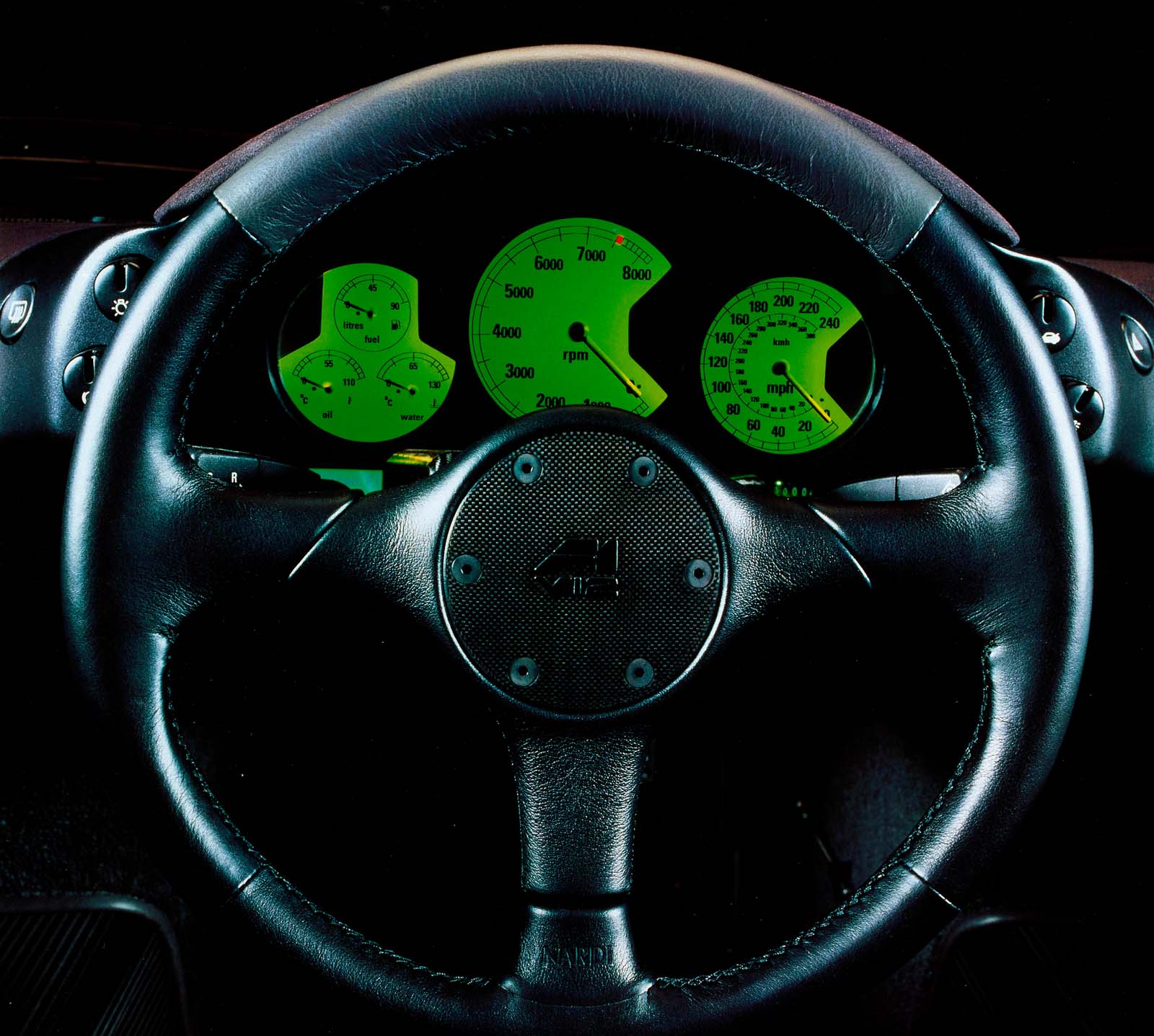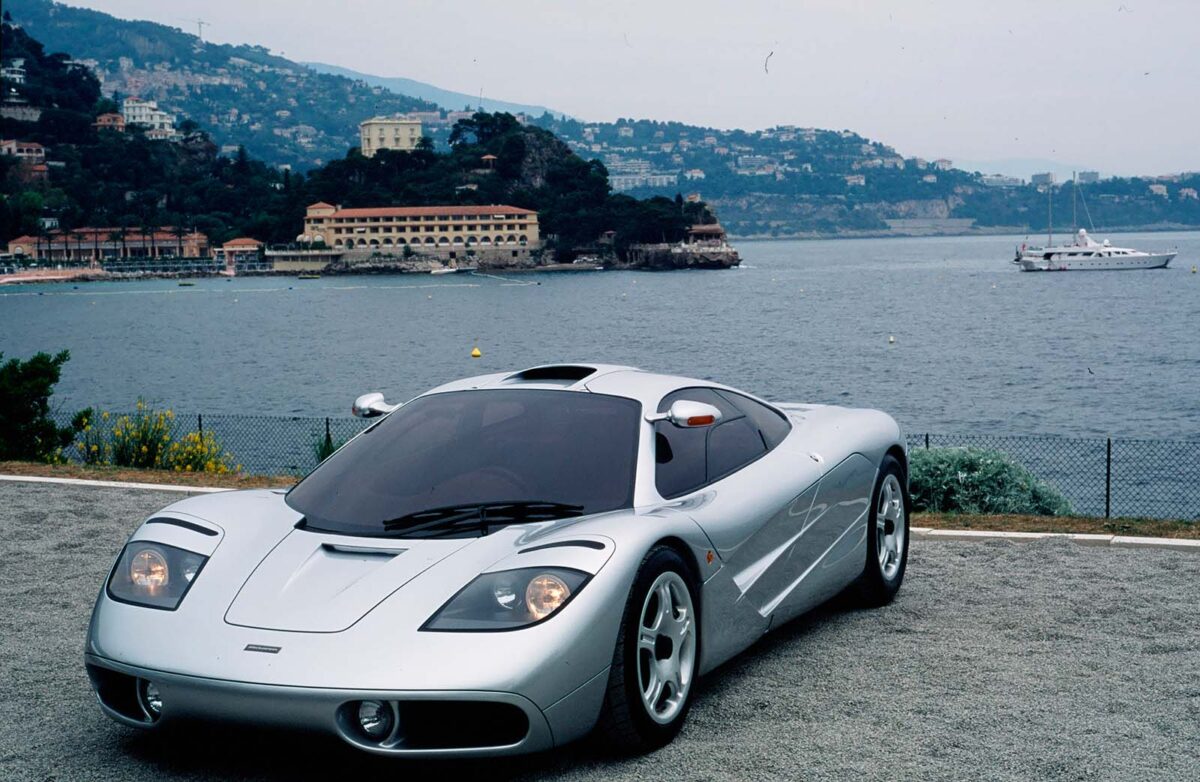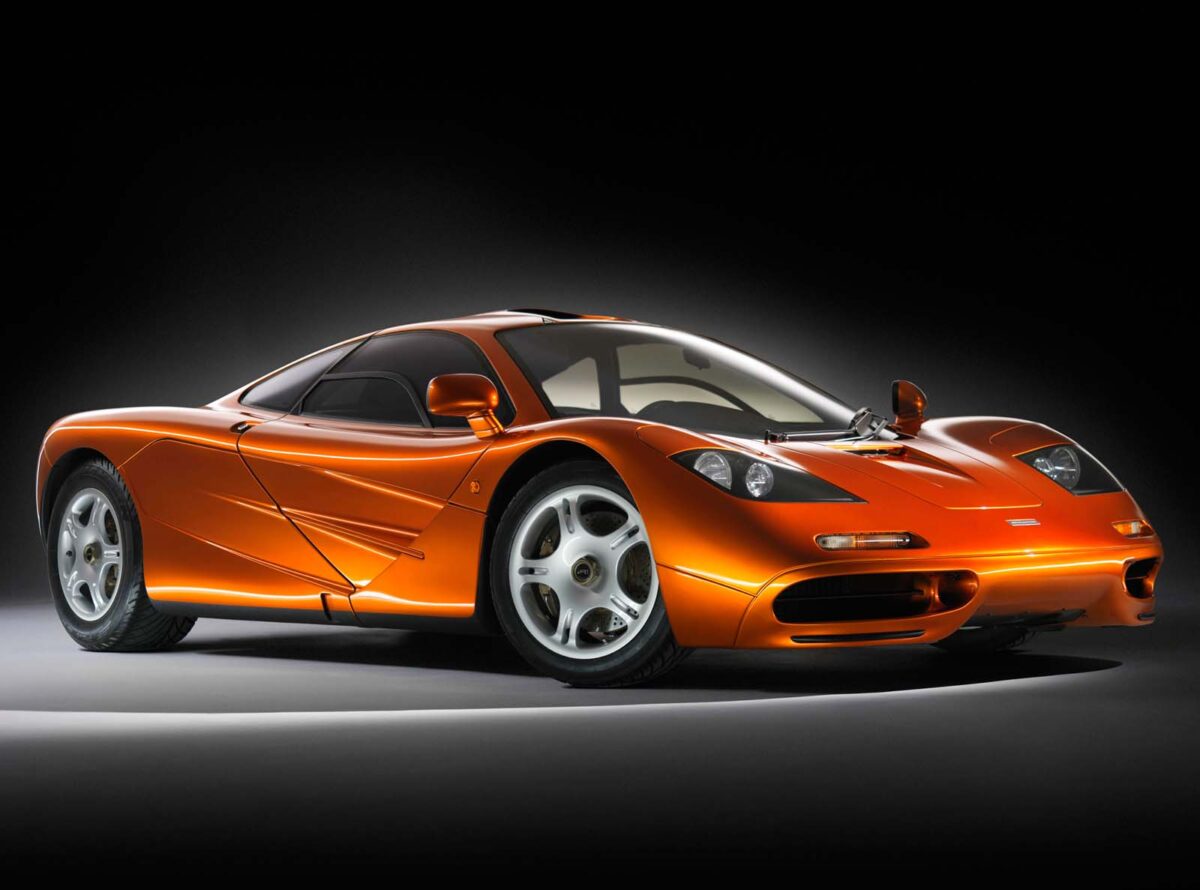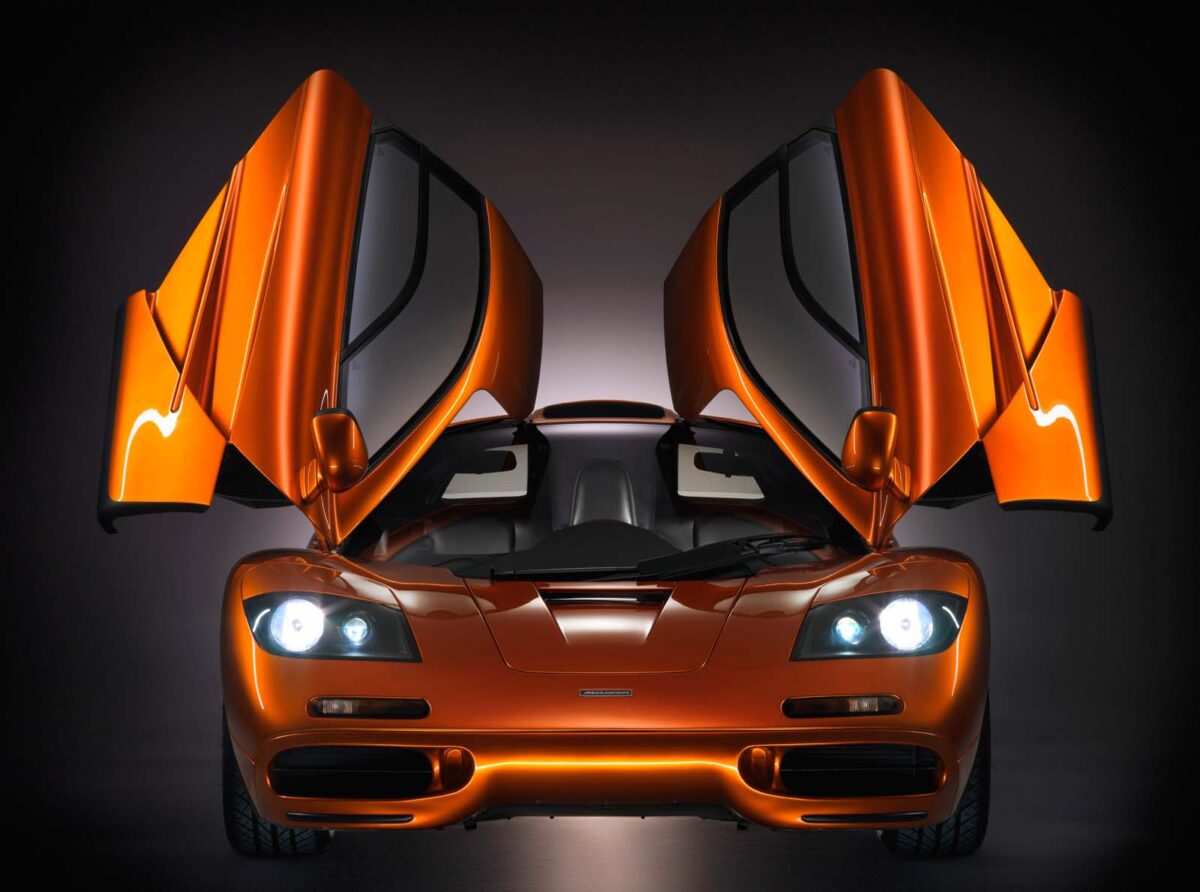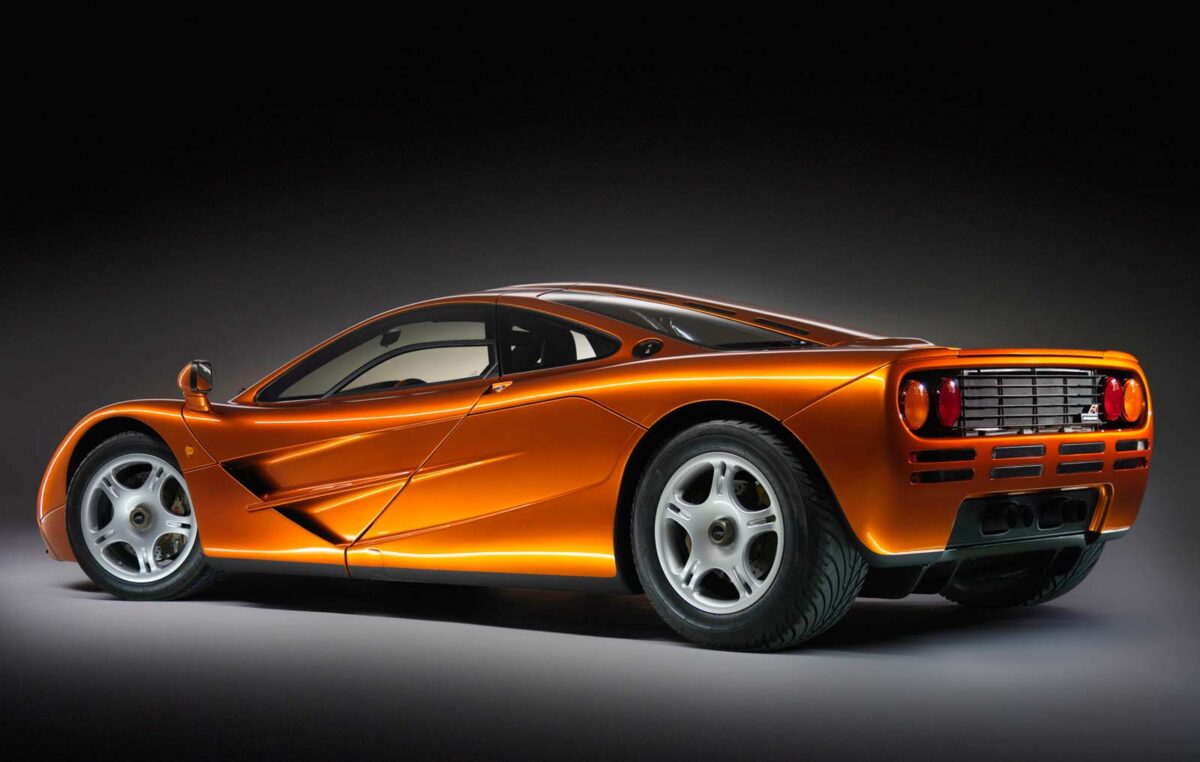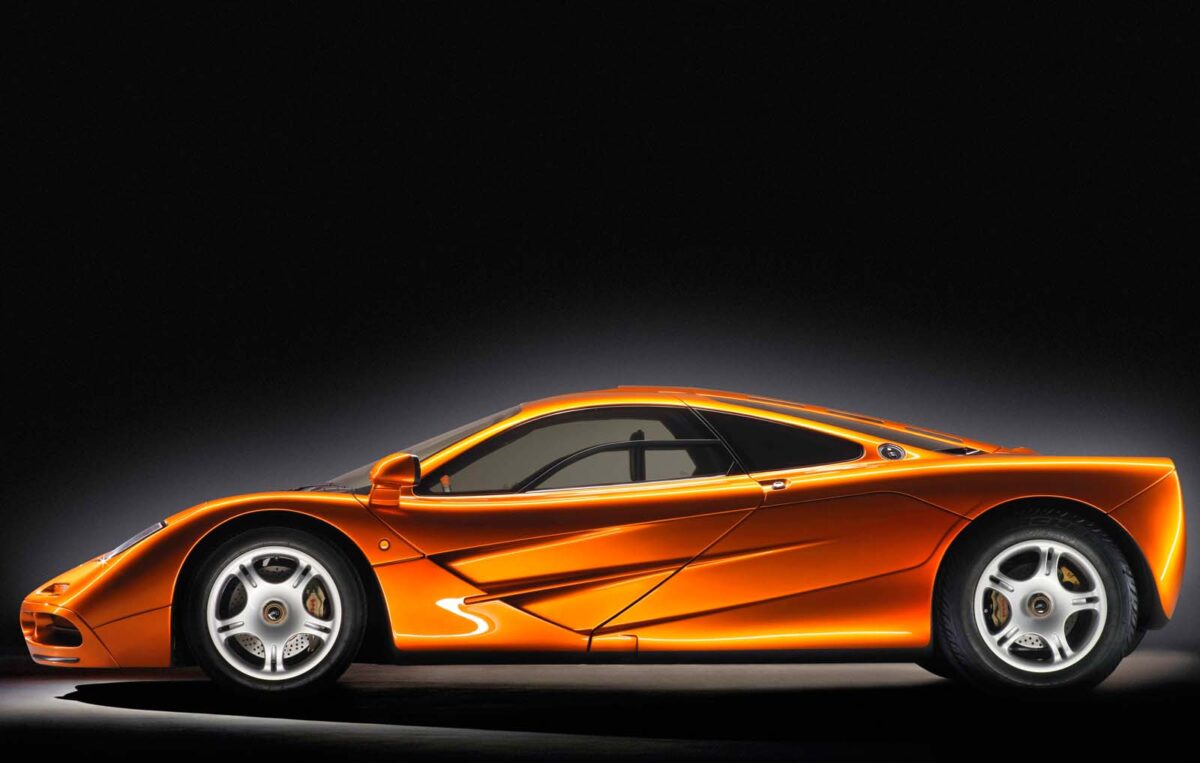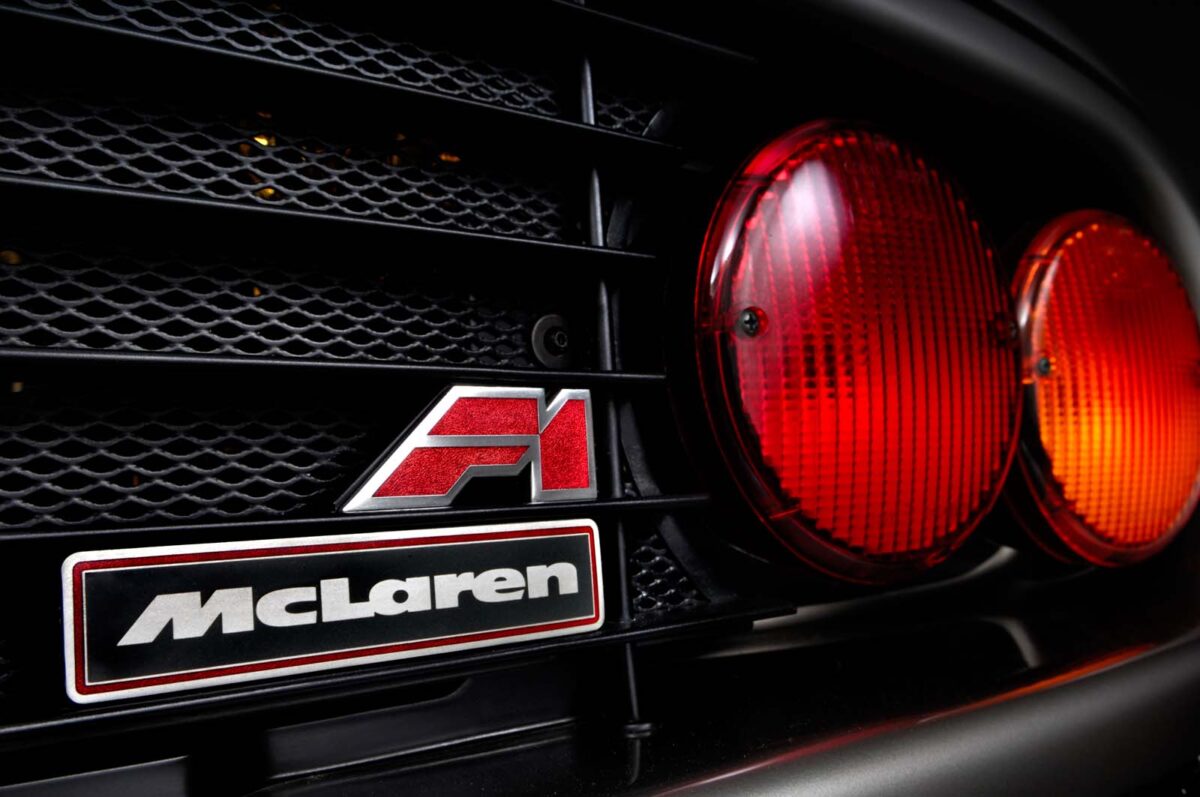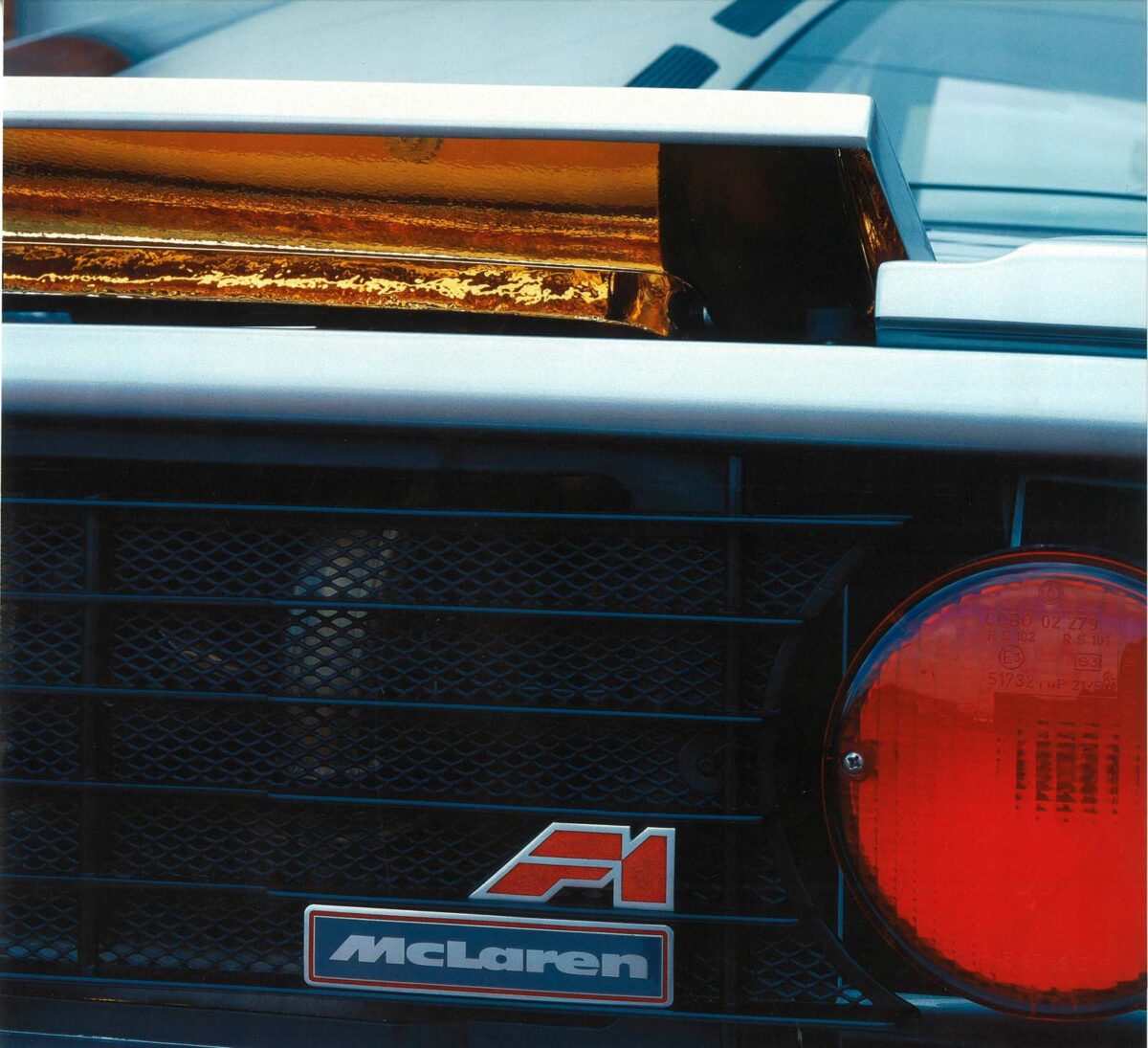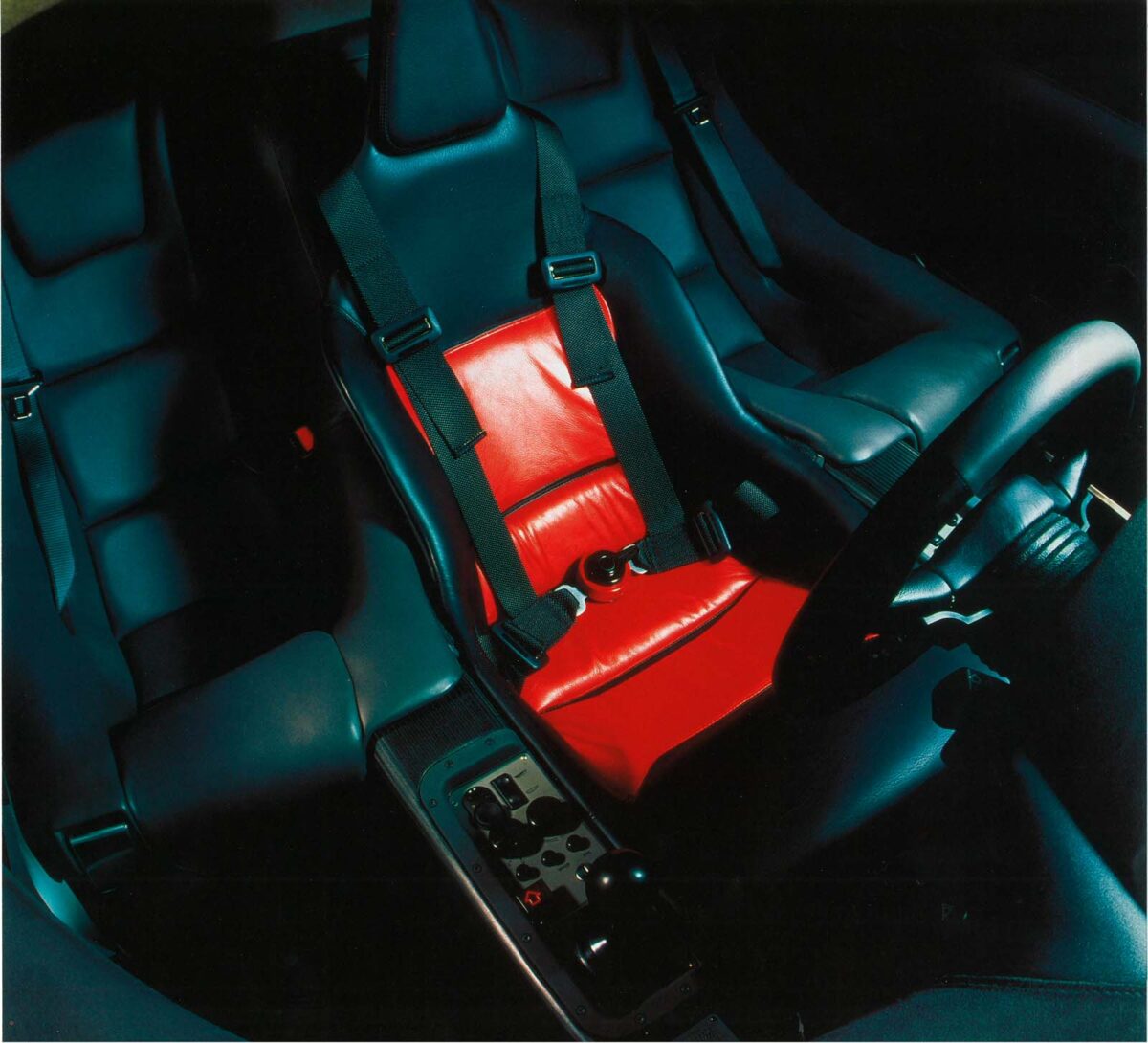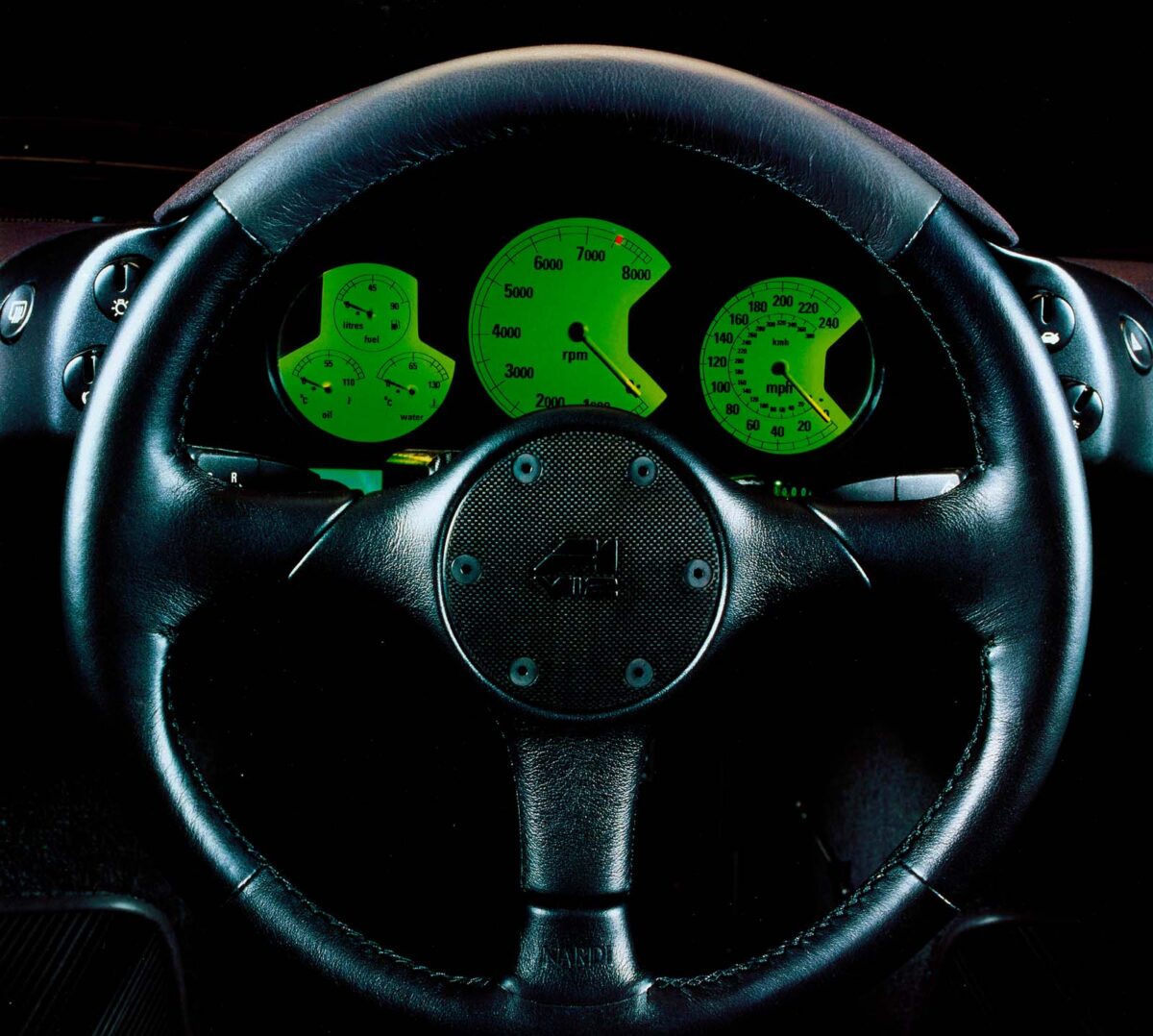First published: May 28, 2016
McLaren publishes original 1992 F1 road car press release
We set out to produce the best roadgoing driver’s car ever built – or ever likely to be built – and we are confident that this first McLaren production model represents the pinnacle of twentieth century high-performance sports car design.
Monaco 2016
At this year’s Monaco Grand Prix McLaren re-published the original McLaren F1 press release in full. The date marked 24 years since the 1992 Monaco Grand Prix, where the F1 road car was first presented at the Sporting Club Monaco. At the time, McLaren had won seven of the previous eight drivers’ titles and was on a high.
The name McLaren F1 implied an F1-inspired spirit but its technology was influenced by the pioneering early days of motoring, from bespoke specification options for buyers to a completely clean sheet in terms of engineering. The original McLaren F1 press release reveals every detail of the legendary V12 supercar.
The 1992 McLaren F1 press release
The entire 1992 press release (reformatted by McLaren) is provided here:
- The McLaren F1: Press Kit 1992 (744 KB PDF)
Press release excerpts
Preface
Having won seven World Championship titles in the past eight Formula One racing seasons, the next logical challenge for TAG/McLaren has been to exploit its outstanding Grand Prix racing capabilities in the design of an entirely new order of high performance road car – the production McLaren F1.
Our new McLaren F1 presents Formula 1 technology in road-going form – a high performance sports car, dedicated to driving pleasure, yet being habitable and spacious, capable, in fact, of carrying three tall adults and their luggage in great comfort.
All manufacturers claim excellence, advance and high-technology in new products. All modern “supercars” claim high-performance, low drag, head-turning style.
But now McLaren Cars’ philosophy marks a completely new departure. Our thinking behind the McLaren F1 is genuinely different. Different but not new. McLaren Cars’ approach matches that of the earliest pioneers of motoring itself, combining a completely clean sheet of paper with leading edge technology.
Because no avoidable compromise is acceptable in Formula 1 design, none has been accepted in our new F1 – no carry-over of existing components; no separated design of chassis and body; no expedient use of proprietary parts, nor any proprietary engine; no submission to passing fads or fashion. Unless the most penetrating engineering analysis has demanded it, the F1 does not feature it.
A Formula 1 car simply adapted for the road, however, would be uninhabitable, impractical, harsh, vibratory – ferociously tiring. But Formula 1 technology applied unreservedly for the road – as in the McLaren F1 – marks an entirely new departure, a new dawn for high-performance motoring.
This is the exclusive McLaren F1 – painstakingly redefining the Grand Touring “supercar” and “driver’s car” for the 21st century.
— Mansour Ojjeh / Chairman
Foreword
Our main objective has been to create the purest driver’s car, a new beginning, a design which simply re-writes all existing standards.
For many of us at McLaren, this opportunity to design and construct the “ultimate sports car” has been a dream come true.
We set out to develop the world’s finest driver’s car by applying Formula 1 technologies to offer Grand Prix-style capability, control and quality throughout; a car individually built and tailored to the most discerning of owners.
We set out primarily to build our own car in our own way. As the programme progressed, we analysed and evaluated all existing mid-engined sports and “supercar” designs. Our established objectives remained unaltered. Our target has been to create the purest driver’s car, compact and above all ultra-lightweight, to achieve optimum all-round performance. It also had to embody the most advanced engineering, intricate and elegant detailing and peerless quality – all to the standards hitherto found only in the modern Formula 1 racing car.
An entirely purpose-designed engine and transmission were essential, combined with innovative modern structures, frontier aerodynamics and pure, balanced styling. Practicality was also vital, the finished car to be functional yet exciting to drive under all condition.
This concept – targeted strictly upon minimal weight, maximum driveability and practicality – combined with our company heritage of exceptional performance, painstaking build quality and uncompromising safety standards – entirely merits the car being named the “McLaren F1.”
We set out to produce the best roadgoing “driver’s car” ever built – or ever likely to be built – and we are confident that this first McLaren production model represents the pinnacle of twentieth century high-performance sports car design.
— Gordon Murray / Technical Director
Images
McLaren F1 features
For the driver
- Reach adjustable foot pedals
- Customised controls
- Ergonomic F1 Nardi steering wheel
- Gear change reverse-gear lockout
- Right hand 6-speed manual gearchange
- Driver-selectable downforce control
- Reach and rake adjustable steering column
- Wheel flipper horn and light flasher switches
- Forward sited central driving seat
- Driver subsidiary information screen
- High-clarity analogue instrumentation
- High-level internal and external rearview mirrors
- Armrest structural seat location beams each side
- One centreline front driving seat
- Computerised fault warning system
- Two offset rear passenger seats
- F1 style full restraint harnesses
Equipment
- Space saving, dry opening dihedral doors
- Connolly Soft Assisted Aniline upholstery
- Total area fixed glass heating and demist
- Purpose designed 10 CD autochanger
- 8 cubic feet cool, fume-free luggage space
- Tailored luggage to match
- Gas-strut assisted door opening
- Security transmission lock
- Facom titanium lightweight tool kit
Electronics
- TAG Electronics engine management system
- TAG Electronics onboard data acquisition
- Service accessible electronic data logging
- External landline down-load linkage for factory diagnosis
- High capacity electrical system
- Remote battery charging point
Aerodynamics
- Fan assisted boundary layer control
- Automatic brake and balance
- Full ground effects underbody
- Automatic brake cooling on demand
- High efficiency cooling ducts
- Windscreen deflector
- Idling radiator hot air vents
- Driver-adjustable downforce control
Safety
- Laminated, heated glass
- Central racing fuel cell
- F1 survival cell
- Full driver harness
- Safety steering
- Safety handling
- Safety braking
- Integrated roll-over structure
- Passive safety side intrusion barriers
- Passive safety front and rear crash structures
Structure
- Integrated roof moulding
- Chassis load bearing engine mounting
- Chassis load bearing transaxle mounting
- Full carbon side intrusion doors and sills
- Integrated airbox/rollover protection
- Full monocoque moulded carbon crash beams
Chassis
- Chassis load bearing transaxle mounting
- Full carbon ‘side intrusion’ doors and sills
- Integrated airbox/rollover protection
- Advanced ISA rear suspension geometry
- Full carbon composite moulded manufacture
- Formula One style protective Jabroe grounding plates
- Competition-derived multi-vented brake discs
- Advanced concept GPS front suspension geometry
- Purpose designed high-performance tyres
- Race-bred specially designed magnesium lightweight wheels
- F1 Monobloc brake callipers Four overhead camshafts
Engine
- Aluminium flywheel
- Carbon clutch
- 48 valve cylinder heads
- Variable inlet valve timing
- Offset space-saving final drive
- F1 style high level intake engine airbox
- Water-oil cooling heat exchanger system
- Purpose designed and made 6.1 litre V12
- “Get you home” emergency management system
- Lightweight Inconel silencer box/rear crash structure
- High-performance full dry-sump lubrication
- Super compact 6-speed transverse gearbox
- Weight saving magnesium castings
- Four overhead camshafts
Notes
- First published: May 28, 2016
- Images: McLaren Automotive
- Press release: McLaren Automotive
